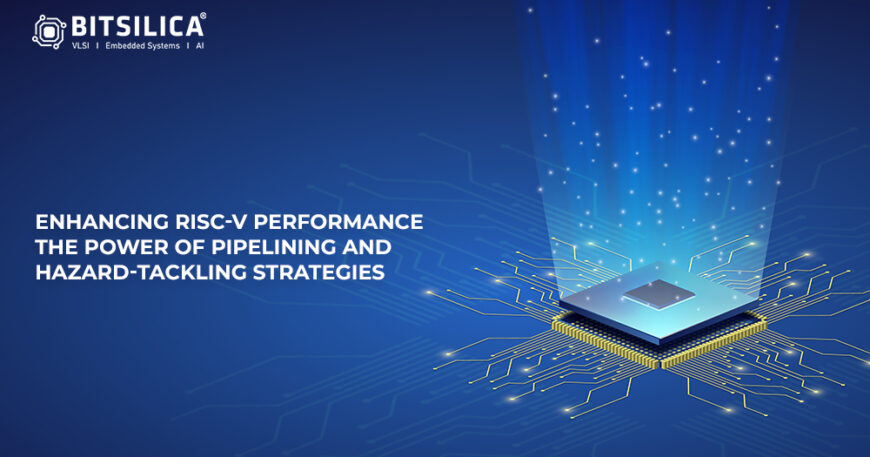Enhancing RISC-V Performance: The Power of Pipelining and Hazard-Tackling Strategies
In the ever-evolving world of modern processor design, one concept has revolutionized the way we optimize performance: pipelining. This ingenious technique has breathed new life into RISC-V based systems, elevating their processing capabilities to new heights. By breaking down the instruction execution process into distinct stages, pipelining empowers faster and more efficient data processing. In this article, we’ll delve into the world of pipelining, exploring its stages and strategies for overcoming potential hazards.
Path of Instructions: Navigating through Pipelining Stages
Pipelining introduces a sequence of stages, each dedicated to a specific task, resulting in a streamlined execution of instructions:
1. Instruction Fetch Stage: This stage relies on a Program Counter and Instruction Memory modules to retrieve the next instruction in the sequence.
2. Decode Stage: The instruction is decoded using a combination of Register File, Control Unit, and Sign Extension modules. This yields the opcode and operands necessary for execution.
3. Execution Stage: Armed with an Arithmetic Logic Unit (ALU), this stage executes arithmetic and logical operations as dictated by the opcode and operands.
4. Memory Access Stage: Here, the Data Memory module comes into play, facilitating instruction loading and storing.
5. Write-Back Stage: In the final stage, the operation’s result is written back, completing the execution cycle.
Disrupting the Flow: Exploring Hazards within Pipelining
While pipelining offers increased throughput and reduced execution time for individual instructions, unforeseen events known as hazards can disrupt this smooth flow, leading to inefficiencies, pipeline stalls, and performance degradation. Three primary types of hazards stand out:
1. Data Hazards: These arise from data dependencies, as different instructions compete for data access. They impede the execution of subsequent instructions that rely on data generated by earlier instructions.
2. Control Hazards: Control hazards emerge due to conditional branch instructions altering the program counter’s flow, leading to a shift in the instruction sequence within the pipeline.
3. Structural Hazards: Multiple instructions demanding the same hardware resource cause structural hazards, which hinder the pipeline’s efficient functioning.
How to Overcome These Hazards?
Efficient RISC-V pipeline design involves a range of strategies to eliminate hazards and ensure smooth operation:
1. Forwarding (Data Bypassing): By directly forwarding computation results from one pipeline stage to another, the need to wait for the writeback stage result is bypassed. This technique utilizes multiplexers (mux) in the execution stage and effectively resolves data hazards.
2. Stalling: Stalling involves inserting no-operation instructions, or NOPs, to delay-dependent instructions until required data is available. While it resolves data hazards, it comes at the cost of increased time compared to forwarding.
3. Speculation: Speculative execution comes into play with branch instructions. If a certain condition is met, one instruction is executed; otherwise, an alternate instruction is executed. This pre-emptive approach minimizes the impact of control hazards.
The Impact and Potential of Pipelining
Pipelining is a revolutionary concept that has transformed processor design, particularly in the context of RISC-V-based systems. Its ability to optimize task execution and streamline instruction flow has significantly enhanced data processing capabilities. The obstacles of pipeline disruption can be mitigated by addressing hazards through techniques such as forwarding, stalling, and speculation, allowing RISC-V processors to operate at peak efficiency and performance.
In conclusion, the incorporation of pipelining and effective hazard-tackling strategies has ushered in a new era of performance enhancement for RISC-V-based systems, making them even more powerful and efficient in handling complex computing tasks. The future holds even greater promise as these techniques continue to evolve, driving innovation and pushing the boundaries of what’s possible in modern processor design.
Key Phrases: RISC-V RISC-V based systems RISC-V pipeline
Explore More: VLSI Design & Verification Challenges: Dive into technical insights





